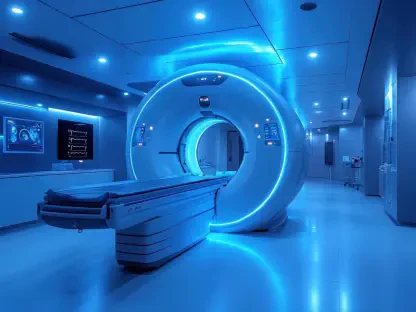In the rapidly evolving landscape of European life sciences, mergers and acquisitions (M&A) are increasingly shaped by the integration of cybersecurity and artificial intelligence (AI). As organizations navigate these complex realms, they are compelled to balance regulatory compliance with technological advancement. Both Belgium and Switzerland serve as critical examples of how nations within Europe are proactively addressing these challenges, emphasizing the need for robust cybersecurity measures and adopting strategic AI applications. Consequently, these elements are no longer peripheral considerations but have moved to the forefront, significantly influencing M&A strategies and guiding the trajectory of future developments in the sector.
The life sciences sector is undergoing a significant transformation marked by an increased focus on security protocols and smart technology innovations. This shift is further compounded by evolving regulatory mandates, such as those witnessed in Belgium with the adoption of the NIS2 Directive, and Switzerland’s forward-thinking approach to integrating AI in drug research and healthcare systems. Each country’s unique response to these developments highlights the broader European endeavor to harmonize the dual objectives of ensuring thorough security frameworks while fostering an environment conducive to technological progression. This strategic balancing act is crucial as organizations aim to enhance their competitive advantage and align with both consumer expectations and legislative demands.
The Impact of Cybersecurity in Belgium
Belgium has undertaken significant regulatory reforms to bolster its cybersecurity landscape, particularly impacting healthcare and life sciences sectors. The recent transposition of the NIS2 Directive into Belgian law reflects this urgency, mandating a comprehensive and proactive approach to cybersecurity across more than 2,500 entities. These entities include healthcare providers, research facilities, and manufacturers of pharmaceuticals and medical devices. The directive necessitates a thorough evaluation of existing security frameworks, emphasizing the need for enhanced protocols to protect sensitive data against potential breaches. With digital transformations interconnecting health services, life sciences, and cyberspace, a secure architecture is paramount to prevent potentially devastating disruptions.
The implementation of the NIS2 Directive introduces stringent compliance requirements, significantly influencing M&A activities within the sector. Companies engaged in mergers or acquisitions must ensure their cybersecurity practices adhere to defined standards, including ISO 27001. Due diligence processes have therefore been recalibrated to include detailed cybersecurity scrutiny. Acquiring entities must understand potential vulnerabilities and risk management strategies, emphasizing that non-compliance could result in severe regulatory penalties. Furthermore, personal liability for executives plays a pivotal role in strengthening compliance, as bans on executive positions loom in cases of negligence, thereby highlighting the high stakes involved in meeting the directive’s standards.
Switzerland’s Strategic Approach to AI
Switzerland’s engagement with AI is transforming the healthcare landscape by integrating intelligent systems across various medical domains, such as drug research and diagnostics. AI’s potential to streamline data collection, enhance accuracy, and reduce research timelines presents significant opportunities for growth and innovation. However, Switzerland currently faces challenges due to the lack of specific AI legislation. The regulatory framework demands transparency and adherence to general data protection regulations, such as the Swiss Data Protection Act. As a result, entities deploying AI must navigate these complex environments, ensuring that their technology solutions comply with broader laws governing data protection and fairness.
The absence of tailored AI regulations in Switzerland necessitates a strategic approach for companies contemplating mergers or acquisitions in the life sciences sector. Organizations must conduct a thorough analysis of AI compliance, reflecting a nuanced understanding of existing legal environments. This scrutiny influences negotiation dynamics and informs investment decisions, as potential investors require comprehensive protective measures like representation and warranty clauses. Moreover, as Switzerland aligns itself with forthcoming global AI standards, including the EU’s AI Act, companies must enhance their due diligence processes. This proactive stance is crucial to mitigate uncertainties and to ensure seamless integration into rapidly evolving regulatory landscapes.
Future Directions in Life Sciences M&A
In the dynamic European life sciences sector, mergers and acquisitions (M&A) are increasingly influenced by the integration of cybersecurity and artificial intelligence (AI). Organizations find themselves in a complex landscape where they must balance regulatory compliance with technological innovation. This is evident in countries like Belgium and Switzerland, which exemplify how European nations proactively tackle these challenges. Both countries underscore the critical need for robust cybersecurity measures while strategically adopting AI applications. As such, cybersecurity and AI are no longer peripheral aspects but have become central factors, significantly impacting M&A strategies and shaping the future trajectory of the sector.
The life sciences field is undergoing a substantial transformation, focusing more on security protocols and technological advancements. This change is further driven by evolving regulatory requirements. For instance, Belgium’s adoption of the NIS2 Directive and Switzerland’s innovative use of AI in drug research and healthcare demonstrate each country’s unique approach. Collectively, these responses reflect Europe’s broader effort to harmonize strong security frameworks with a technology-friendly environment. This balancing act is crucial for organizations aiming to boost their competitive edge while meeting both consumer expectations and legal requirements.









